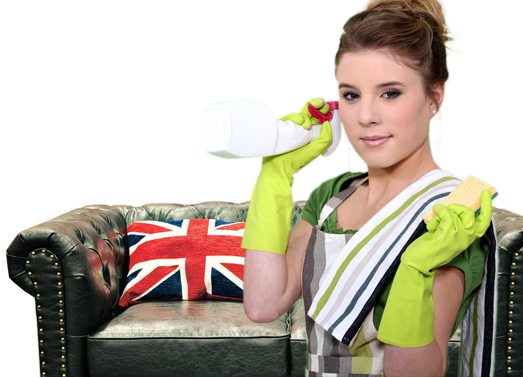Refresh Your Stovetop: Removing Burnt Grime with Ease
Posted on 22/05/2025
Refresh Your Stovetop: Removing Burnt Grime with Ease
A sparkling, clean stovetop not only enhances your kitchen's appearance but also ensures a healthier cooking environment and improved appliance performance. However, everyday cooking often leads to stubborn, burnt-on grime, grease splatters, and unsightly stains. If you're wondering how to revitalize your stove and effortlessly remove that tough residue, you've come to the right place. Refresh your stovetop by removing burnt grime with tried-and-tested methods, home remedies, and expert tips for every type of surface.

Why Burnt Grime Accumulates on Stovetops
Stovetops are exposed to frequent spills, boiling over of sauces, splattering oils, and high heat. This combination can cause food particles and liquids to carbonize, resulting in a hard, burnt layer that regular cleaning fails to address. Over time, this accumulation does not just make your stove unsightly--it can even impart unwanted flavors to your meals and reduce the efficiency of burners.
Types of Stovetops and Grime Challenges
- Gas Stovetops: Feature removable burners and grates, but nooks and crannies can trap debris.
- Electric Coil Stovetops: Coils hide spills underneath, making grime buildup harder to detect and clean.
- Glass/Ceramic Cooktops: Sleek look, but burnt residue can scratch or cloud the surface if not handled cautiously.
- Induction Cooktops: Similar to glass cooktops but even more sensitive to scratches from abrasive cleaners.
How Burnt-On Stovetop Grime Impacts Performance
*Ignoring burnt-on residue isn't just an aesthetic issue.* Here's what that lingering grime can do:
- Hinders heat distribution, making your cooking less efficient
- Wears down surfaces through corrosion or etching
- Emits off-putting odors and smoke when reheated
- Provides a breeding ground for bacteria if not properly cleaned
Essential Supplies for Removing Burnt Grime from Stovetops
Before starting your stovetop cleaning project, gather the right materials to make removal as easy and effective as possible. Here's a checklist of must-have supplies:
- Baking soda
- White vinegar
- Lemon juice (for natural degreasing)
- Dish soap
- Non-abrasive scrubbing pads or sponges
- Soft microfiber cloths
- Plastic scraper (for glass and ceramic surfaces)
- Old toothbrush
- Spray bottle
- Rubber gloves
Tip: *Avoid steel wool or metal scrapers on glass, ceramic, and induction cooktops to prevent scratching.*
Step-By-Step Guide: Refresh Your Stovetop and Remove Burnt Grime
1. Unplug and Cool Down
*Safety first!* Always make sure your stovetop is completely turned off and cool before you begin cleaning. Unplug electric models and remove gas burner grates or coils (if applicable).
2. Remove Loose Debris
Wipe away any loose crumbs or debris with a dry cloth. This step prevents further scratching during wet cleaning.
3. Soak Removable Parts
- Fill your sink with hot, soapy water.
- Place burner grates, drip pans, and removable knobs in to soak for 15-20 minutes.
- Use a sponge or old toothbrush to scrub away softened grime.
*For stubborn stains, sprinkle baking soda directly onto damp parts, let sit, then scrub.*
4. Prepare a DIY Burnt Grime Cleaner
- Mix a paste of baking soda and water (3:1 ratio) for stuck-on grime.
- For extra power, add a few drops of lemon juice or vinegar.
- Optional: Commercial cooktop cleaner formulated for your stove type.
5. Apply Cleaner and Wait
Spread the baking soda paste generously over burnt areas. Let the paste sit for at least 15-30 minutes--this allows it to break down even the toughest layers.
- For glass or ceramic cooktops, avoid spreading the paste over burner elements.
6. Scrub Gently
- Use a non-abrasive sponge or soft cloth in small, circular motions.
- For thick burned-on spots, carefully use a plastic scraper held at a 45? angle.
- For coil burners, clean the pans underneath separately using your paste.
Note: Never flood your stovetop with water! Excess moisture can damage components and electrical connections.
7. Rinse and Wipe Down
- Moisten a clean cloth and wipe away all cleaning paste and loosened grime.
- For glass surfaces, buff dry with a microfiber towel for streak-free shine.
- Make sure parts are fully dry before reassembling your stovetop.
Specialized Cleaning for Different Stovetop Types
Learn how to tackle burnt grime for every kind of stove:
Glass and Ceramic Stovetops
- Remove burnt sugar or plastic immediately, using a plastic scraper and a baking soda paste.
- Buy specialty cooktop cleaners for added shine and scratch resistance.
- Never use rough pads, steel wool, or knife blades.
Gas Stoves
- Deep clean grates and burners regularly to avoid clogging.
- Clean burner caps with vinegar to dissolve greasy deposits.
- Check for stuck food inside burner holes; use a pin or brush to remove debris.
Electric Coil Ranges
- Remove and soak drip pans; clean coils with a damp cloth once fully cooled.
- Do not immerse electric elements in water.
Induction Cooktops
- Stick to non-abrasive cleaners and cloths; use diluted vinegar for streak-free results.
- Wipe up spills immediately to prevent residue from hardening.
Natural and Commercial Cleaner Alternatives
You don't have to rely solely on harsh chemicals. Here are *eco-friendly and store-bought options* for burnt grime removal on your stove:
- White vinegar: Cuts grease; spray, let sit, then wipe away loose residue.
- Lemon juice: Ideal for lighter burns; adds fresh scent.
- Hydrogen peroxide: Add to baking soda for extra lifting power.
- Commercial glass and stovetop cleaners: Safe for most surfaces--always follow manufacturer's instructions.
- Magic Eraser sponges: For super tough spots (use gently on smooth surfaces).
How to Prevent Burnt Grime From Returning
After you refresh your stovetop, keeping it pristine is all about little habits:
- Wipe down surfaces after each use with a damp cloth.
- Deep clean weekly, not just after spills or burnt messes.
- Use liquid stovetop protectors (glass/ceramic models) to create a barrier against spills.
- Fit silicone burner covers for gas stoves to reduce cleaning frequency.
- Stay vigilant: Address spills the moment they happen.
*Consistency is key to stopping build-up before it becomes a stubborn, burnt-on mess!*
When to Call a Professional Cleaner
If your stovetop's burnt grime simply won't budge, especially on vintage or delicate models, seeking expert help may be wise. Excessive scraping on sensitive surfaces can cause damage, while lingering odors or discoloration may call for specialized restoration.

Frequently Asked Questions: Tackling Burnt Grime & Stovetop Refreshing
- Q: Can I use oven cleaner on my stovetop?
A: Only use products approved for stovetops and always follow safety guidelines. Oven cleaners are too harsh for glass, ceramic, and induction ranges. - Q: What's the fastest way to remove burnt grime?
A: Use a baking soda paste, let it sit for 30 minutes, then scrub gently. For rapid results on glass, try a plastic scraper with cooktop-safe cleaner. - Q: Will vinegar damage my stove?
A: Vinegar is safe for most surfaces but avoid concentrated vinegar on aluminum or untreated metal, as it can cause surface dullness over time. - Q: How often should I deep clean my stovetop?
A: Aim for a weekly deep clean and spot-wipe after every meal prep for the best results.
Conclusion: Enjoy an Effortlessly Clean, Refreshed Stovetop
Removing burnt grime from your stovetop doesn't have to be a dreaded chore. With eco-friendly solutions, gentle scrubbing, and the proper routine, you can refresh your stove and keep it looking--and performing--like new. Whether you have a modern glass cooktop or a classic gas range, these easy stovetop cleaning techniques will bring back its shine without damaging the surface.
Remember: Regular maintenance is the secret to preventing burnt residue and grime. Make cleaning part of your kitchen routine, and your stovetop will always reflect your culinary pride.
Looking for more kitchen cleaning hacks? Check out our other articles for expert-approved, hassle-free methods to keep your home sparkling and hygienic.





